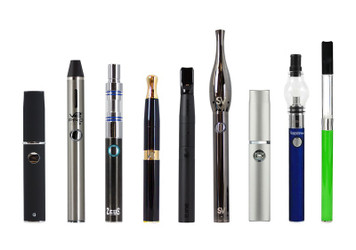Vaping may be briefly defined as the practice of breathing in a vaporized substance such as tobacco or other herbs – traditionally, using coals in traditional devices and, more recently, in the form of electronic cigarettes ("e-cigs") or at-home, electrically or battery-powered vaping devices.
Given such a broad definition of vaping, though, come some important distinctions regarding the methods and tools of the craft. Over recent years, the market has become saturated with the many varieties of vaping products and techniques – which have evolved rapidly over time. Technology fuels the innovation of the vape shop industry.
From primitive vaping techniques calling for grinding hemp seeds and vaporizing them over coals to the modern distribution of wholesale vaporizers, the practice has come a long way in 2,500 years.
The rich history of vaping, dating as far back as the BCs, is worthy of exploration. Let's get into it.
The Ancient Origins of Vaping
History buffs will likely be familiar with the name Herodotus (c. 484 – c. 425 BC), one of the preeminent historians of the world who chronicled the many wonders of Ancient Greece for posterity to appreciate. Indeed, many have called Herodotus the "Father of History" for the systematic method he used to document phenomena he encountered.
The Scythians were a nomadic people emanating from the vast Eurasian steppes, arguably originating from modern-day Iran. Among many fascinating topics that Herodotus covered as he visited with and studied the Scythians, he described the earliest version of vaping that they pioneered:
"The Scythians take some of this hemp-seed and throw it upon the red-hot stones; immediately it vaporizes and gives out such a vapor as no Grecian vapor-bath can exceed; the Scythians, delighted, shout for joy."
In short, the Scythians got high on THC with the simple yet effective vaping method they invented.
The Creation of the Hookah
Anyone who has visited the Middle East (or trendy urban bars in the West) has likely encountered the hookah.
The hookah is essentially a refinement of the Indians upon the original vaping concept of the Scythians as described by Herodotus. The term "hookah" refers to:
"a single- or multi-stemmed instrument for heating or vaporizing and then smoking either tobacco, flavored tobacco… or sometimes cannabis, hashish, and in the past opium. The smoke is passed through a water basin—often glass-based—before inhalation."
The water adds an extra stage of filtering, removing many of the potentially toxic byproducts of vaping for a cleaner, smoother experience once the vapor hits the lungs.
The hookah, once confined to the Indian subcontinent and surrounding lands, began to gain worldwide notoriety following the British colonial period beginning in the 1700s.
As it spread throughout the British Empire territories and beyond, hookah adopted a multitude of names, many of them unique to a single nation. The various names for hookah across the globe include:
- Argeela
- Shisha
- Sheesha
- Huqqa
- Ghalyan
- Chillim
- Nargeela
- Lula
- Gudugudaa
That is just a small sampling of the many monikers that hookah has earned throughout the world.
Hookahs Arrive in the Americas
After hundreds of years of occupying a central role in the social lives of populations in the Far and Middle East, hookah finally arrived at US shores.
The hippie movement of the 1960s-1970s can be largely credited with the increased popularity of hookahs during this time period, in addition to the importation of the practice by returning combat troops serving in Vietnam, which is also a historical consumer of hookah.
Originally confined to luxury lounges in cosmopolitan American cities on the coasts, modern wholesale vaporizers and traditional hookahs are now sold in gas stations and smoke shops throughout the land of the free. Chances are there is a local vendor of vaping products near your own community.
The indoor smoking bans that swept the nation at the turn of the millennium created some issues for hookah lounges, but the growth of the recreational hookah industry has nonetheless increased steadily. It shows no signs of slowing down.
The Birth of the Modern Vaporizers: 1980s
As we mentioned previously, technology has greatly transformed the art and science of vaping and vaping products. The first recorded instance of the term "vape" as a verb occurred in 1979 after Phil Ray invented the first e-cig, or electronic cigarette.
Soon thereafter, the big tobacco companies – eager for an alternative to cigarettes perceived to be safer and healthier – jumped into the newborn vaping industry in the US with both feet. A tsunamic of patents for new e-cigs, coming from both the industry and from individual entrepreneurs and inventors, flooded the US patent offices. The race was on.
In the 1990s, devices that physically resemble modern e-cig and vaping pens first emerged with the backing of Phillip Morris.
Eventually, the Chinese caught wind of the rapidly developing e-cig industry. Eager to capitalize on a new market, a 52-year-old Chinese pharmacist named Hon Lik created in 2003 the first commercially viable e-cig. Since then, China has gone on to become a global leader in e-cig and vaping production.
Following the rollout of e-cigs and vaporizers at scale, the US Food and Drug Administration (FDA) and other regulatory bodies became heavily involved in the regulation of the industry. Public relations campaigns intended to curb the use of these products intensified.
However, despite the extensive efforts to quell the demand for vaporizers and similar products on the part of the American public, these devices are more popular than ever.

 US Dollar
US Dollar
